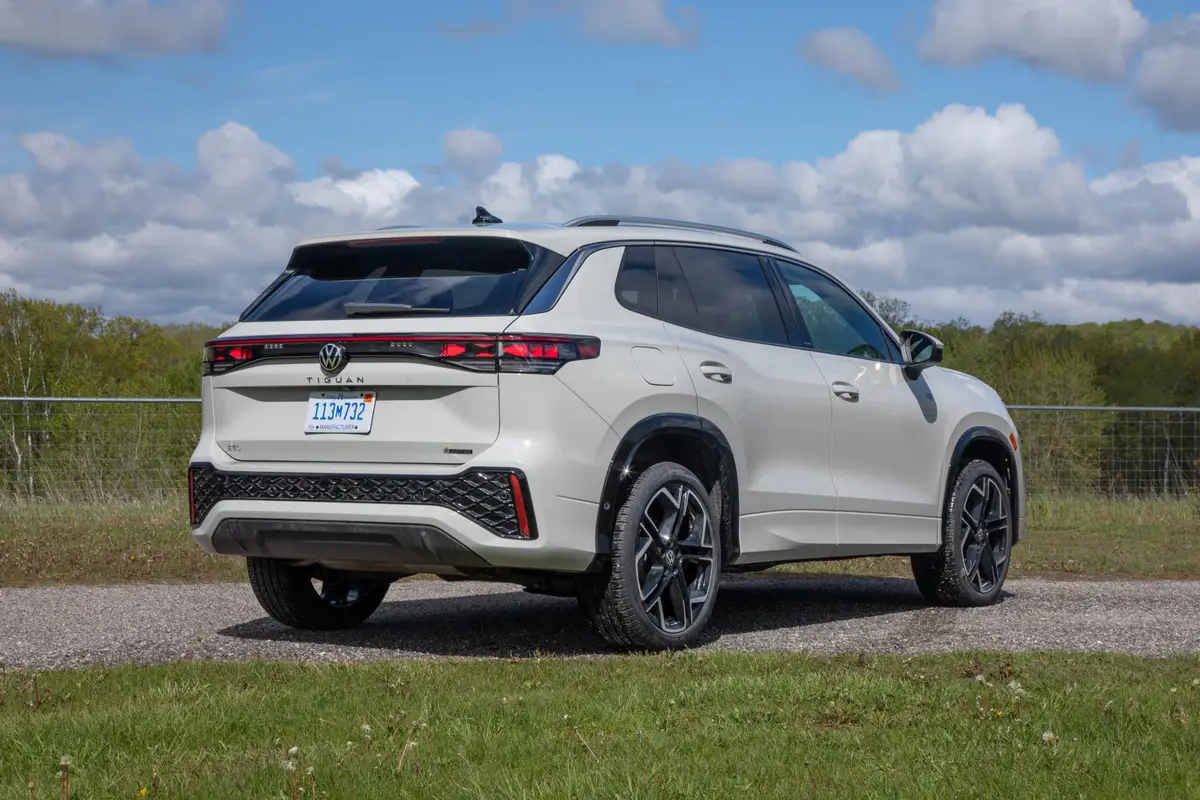Orlando Sentinel's view
There is so much that is right with the new Sterling 827 SLi five-door that I don’t know where to begin. I drove the Sterling 827 around Miami’s congested streets for more than three hours on a blistering Saturday afternoon before winding it up for a high-speed blast down the interstate to see what the car really could do.
I can’t believe this is an English car.
If you ever have driven in a classic English car – no matter what marque – then you know British cars have a distinct and unique personality, a character about them. There is some subtle thing about it that tells you the car is different.
Even though there is a Japanese heart beating in its British body, the Sterling has this uniqueness too. The car looks good. It makes all the right noises. It’s tight. It’s fast. To borrow the slogan of another manufacturer, it just feels right.
British cars historically have been afflicted with all sorts of ugly maladies: rattles, shakes, leaks, squeaks, electrical problems and trim falling off. In the Sterling at least, those days are gone. The Sterling is built by Britain’s largest carmaker, the Rover Group. It is the No. 1-selling executive car in England. And for good reason, too.
The Sterling SLi five-door is put together with painstaking care. I looked at little things like how the seals fit around the door jambs, how the interior panels are held in place and how the trim is fitted. I could find no faults, no sloppiness, nothing that wasn’t first class. The gaps in between the fenders and the hood and between the doors and the body all were uniform and straight. This is a world-class car.
The engine, a 2.7-liter, 24-valve V-6, is built by Honda and is the same unit that powers the Acura Legend. Pumping out a robust 160 horsepower, this smooth engine drives the front wheels through either a five-speed manual or a four-speed automatic. The test car came equipped with the automatic gearbox that features two sets of shift modes, one for sport and one for economy.
In the sport mode, the shift points are delayed slightly to allow the engine to rev up higher before shifting. Had I not glanced at the tachometer needle, I never would have known the car had shifted gears. It’s that smooth. When the accelerator is pressed to the floor, the car pulls straight and true. There is no torque steer. After numerous stops and starts in 90 degree weather, the engine came to life the second the starter engaged.
I took several turns at high speed to see if the car had a tendency to oversteer or understeer. I couldn’t do anything to make the Sterling lose its composure. The tires didn’t squeal, and the car had a very neutral and balanced feel to it. Whoever thought up Sterling’s advertising, slogan, ”Grace Under Pressure,” obviously spent a lot of time behind the wheel of a Sterling.
The test car came equipped with 16-inch Roversport alloy wheels. Sterlings feature four-wheel independent suspensi on and can be ordered with Bosch anti-lock brakes. The test car with anti-lock brakes stopped on a dime.
Americans have long loved British cars for their wood and leather interiors. This is, perhaps, the Sterling’s strongest point. Subtle, elegant, functional and classy are the first words that come to mind as you sit in the captain’s chair and survey the instruments, the leather-covered seats and the wood inlays on the dash, console and doors.
The layout and design of the Sterling’s interior are superb. All switches and buttons are easy to reach, and you never have to take your eyes off the road to find them. You notice little things like how comfortably the shifter fits in your hand.
Zipping around Miami, there were times I forgot I was driving a five-door car. It felt more like a sports sedan. The rear seats are comfortable and leg room – even for six-footers – is more than adequate. The rear hatch area easily can swallow several pieces of luggage.
The onl thing I didn’t like was the feel of the levers controlling the blinkers and the windshield washers. They were a little vague. In technical-speak, their detents were not stiff enough. Several times I engaged the turn signal and found myself looking to make sure it was on.
Something must be said about the Sterling’s air-conditioning system. It is the finest one I’ve ever encountered in a car. Air is distributed throughout the cabin quickly and silently. For the first time in my life, I can honestly say I didn’t mind getting caught in one of Florida’s broiling traffic jams.
The test car was equipped with several items that are being tested for possible installation on a special model for next year: a cellular phone, a CD player and an automatic climate control system. All worked flawlessly.
The cellular phone, mounted on the top of the center console, was a little awkward to reach. If it makes it to production, I’d bet a warm beer and fish and chips dinner that the phone will be relocated.
Since the car made its debut in 1987, it has done battle with Acura, the small Mercedes models, BMWs and Audis. That’s the league the Sterling is playing in.
Rover has improved the car steadily each year. For 1990, Rover has added several equipment upgrades, such as a memory for the power seats on both the driver and passenger seats, a 10-function trip computer and improved interior lighting.
Sterling’s sister ship is the Acura Legend. Put the two side by side and the Honda car’s styling is bland and dated by comparison. Sterling’s British character, though hard to explain, is nonetheless present.
The Sterling is protected by a three-year, 36,000-mile warranty and owners are given a free membership in the Cross Country Motor Club.
If you are considering a luxury car in the $25,000 to $30,000 price range, putting the Sterling high on the list of cars you plan to test drive may end the search rather abruptly.
Latest news



